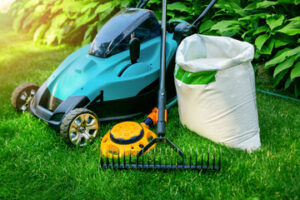A well-managed lawn is not only beautiful but also healthy and environmentally sound. A healthy lawn helps the environment by providing food and shelter to wildlife and reducing soil erosion.
Mow the grass properly (longer between mowings). Use fertilizer correctly and aerate the lawn to improve root growth and prevent thatch and soil compaction. Contact Prime Cut Lawn And Landscaping for professional help.
A lush, green lawn is an essential part of home ownership and improves the overall look and value of your property. But, it requires regular care to keep it in pristine condition. Professionals with agronomic expertise and the right equipment can provide cost-effective and time-saving services, such as mowing, fertilization, weed control, soil health, turf disease management, and aerating. You might be tempted to purchase fertilizer and other chemicals from a hardware store and attempt to do these jobs yourself, but that can be expensive and ineffective.
Whether you want a formal stripe pattern or a pleasing curve that follows the shape of your house, the way you mow your grass makes all the difference in how your yard looks. Cutting too short weakens the grass and reduces its lifespan, while mowing at different heights encourages deep roots and better withstands drought. When choosing a mower, consider a push or riding model. Riding models are more efficient and easier on your back and knees.
Lawn diseases are a constant threat to healthy grass, but you can take steps to prevent and treat them. Proper mowing, aeration, and fertilization, as well as removing twigs and leaves, will help contain disease. Some specific lawn diseases to watch out for in the spring include Snow Mold (if your area receives snowfall), Necrotic Ring Spot, Fairy Rings, and Fungus.
Watering is also a critical part of lawn maintenance, but timing matters. Avoid frequent, shallow irrigation that encourages disease and surface-level growth, instead opting for a few deep waterings per week at the correct times of day. Early morning is ideal, as it will quickly dry the soil and minimize disease risks.
A lawn that is not aerated may be plagued with thatch, a mat of dead grass and debris that can choke out living grasses and make them susceptible to diseases like fungus. During aeration, thatch is removed to open up the soil and allow oxygen, water, and nutrients from feeds to reach grass roots. Dethatching should be performed at least once a year, usually in the fall.
Fertilizing
Over time, your soil loses vital nutrients. Fertilizers replenish them for healthy grass, and they help your turf resist disease, drought, insects and weeds. The best lawn fertilizer is one that is compatible with your soil type and climate, as determined by a soil test.
Your local garden center will provide the results of your soil test and recommend a product. Look for a slow-acting commercial granular fertilizer that contains both nitrogen and phosphorous, which are the most important nutrients to feed your lawn. This type of fertilizer works well on both warm-season and cool-season grasses, and it provides a steady supply of nutrients throughout the growing season.
Besides granular fertilizers, there are liquid and organic fertilizers as well. Organic fertilizers contain natural materials, such as compost, manure, cottonseed meal, bone meal or seaweed. They are better for your lawn and the environment, but they take longer to work than synthetic or chemical fertilizers.
Weed-and-feed fertilizers combine weed control with a light application of nutrient-rich granular or liquid fertilizer, and they are ideal for newly seeded or sodded lawns. Some fertilizers are formulated for a particular season, and you should avoid using them outside of their intended range.
Over-fertilizing your lawn could kill it, so only apply the amount recommended by the soil test. It’s also more environmentally responsible than applying excess fertilizer, which can leach into water features and streams or wash into the streets and storm sewers. Avoid fertilizing near wetlands, rivers, lakes and ponds, as excess nutrient loads can cause noxious weeds and excessive algae growth. After fertilizing, sweep up and collect any unused product on hard surfaces, such as driveways or sidewalks, to prevent it from washing into streets, waterways and storm sewers.
Weed Control
Weed control involves the use of chemicals to kill undesirable plants. It is the main task in lawn care that differentiates it from yard maintenance. Using herbicides incorrectly can result in damage to desirable vegetation, environmental harm and health risks to people and pets. It is important to follow the specific directions on the label for each herbicide. Nonchemical methods of weed control include mulching, good garden or landscape design, keeping turfgrass dense and competitive, proper irrigation and manual removal of weeds when they first appear.
A healthy, thick turfgrass can effectively block out sunlight to weed seeds in the soil. However, weeds still grow in bare patches of soil and around shrubs and trees. Weed control in these areas is important to the overall health of the yard.
For weeds that cannot be pulled by hand, the most effective approach is to apply a preemergence herbicide prior to germination of the weeds. This requires careful timing to ensure that the chemical is applied before the weeds are up and growing, but not so early that it can damage the new grass seedlings. Various preemergence herbicides are available to control annual grasses (crabgrass and annual bluegrass) and certain annual broadleaf weeds (common chickweed, clover, and lawn burweed).
In established turfgrass, postemergence herbicides can be used to control a variety of common perennial weeds such as dandelion, spurge, bindweed, clover and oxalis. These herbicides work by blocking the ability of the weeds to take up nutrients from the ground or make use of photosynthesis. They are typically applied as a spray or drench.
Many weeds produce seed that can infest adjacent turfgrass. Areas that are hard to mow, such as ditch banks and fence rows, may also require weed management attention. There are several broadleaf herbicides that are used in turfgrass, including the phenoxy herbicide family (e.g. 2,4-D, MCPA and mecoprop) and the benzoic acid herbicide family (e.g. dicamba). Some products combine these herbicides to provide greater control of difficult-to-control weeds.
Smothering weeds with nonliving materials that exclude light can be useful in areas where turfgrass is not desired, such as flower beds, foot paths and woody ornamental plantings. Mulches, leaves and even plastic film can be used for this purpose. Landscape fabrics impregnated with herbicides are available for long-term weed control in woody ornamental plantings, but they must be kept covered with a layer of organic material to prevent them from degrading and exposing the weeds to sunlight.
Aerating
A healthy lawn requires a variety of things. You need to mow, fertilize, and weed control it regularly. But aeration is a key component in preventing soil compaction and giving your grass roots the boost it needs to grow deeper. This is accomplished by scooping or “coring” holes into your lawn, allowing air, water and nutrients to penetrate the compacted soil.
If your yard is dense with bare spots or feels brick-hard to the touch, it’s time to aerate. Backyard soccer games, hundreds of laps ran by the family dog and a highly competitive father-son badminton tournament can leave their mark, thinning your lawn and creating compacted soil that inhibits growth.
Over time, soil may lose its natural structure and become aerated to the point where the topsoil no longer holds water. If left unchecked, this can lead to surface sealing, a condition that restricts air and water penetration.
This is a common issue in residential lawns established with sod. Over time, the finer texture of sod is layered on top of the existing coarser textured soil, leading to compacted conditions. Aerating loosens the compacted soil and opens a channel for all of your other lawn treatments to reach grass roots, which can prevent disease, promote a strong root system and discourage weeds and pests.
You should aerate your lawn at the right time of year to make the most of this service. Ideally, you should do this service in the fall for cool-season grasses and during late spring through early summer for warm-season grasses. If your soil is heavy or you have a high-traffic area, you will need to aerate more frequently.
Immediately following core aeration, you should overseed your lawn and apply a light application of fertilizer or compost. If you are not sure how to do this, ask your local lawn care professional for guidance. After overseeding, reseed bare areas and return to your regular mowing and watering schedule. Make sure to not scalp your lawn, a practice that cuts grass too close and encourages moss. This can also be the perfect opportunity to apply a pre-emergent weed control.
